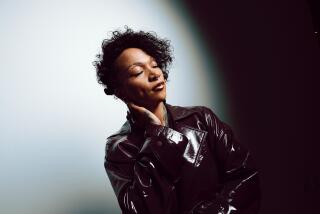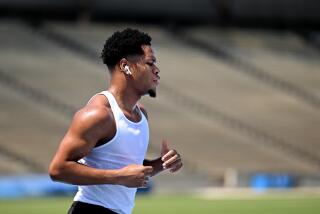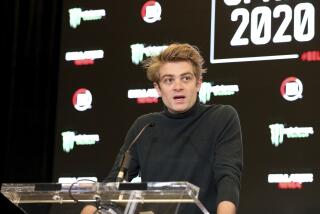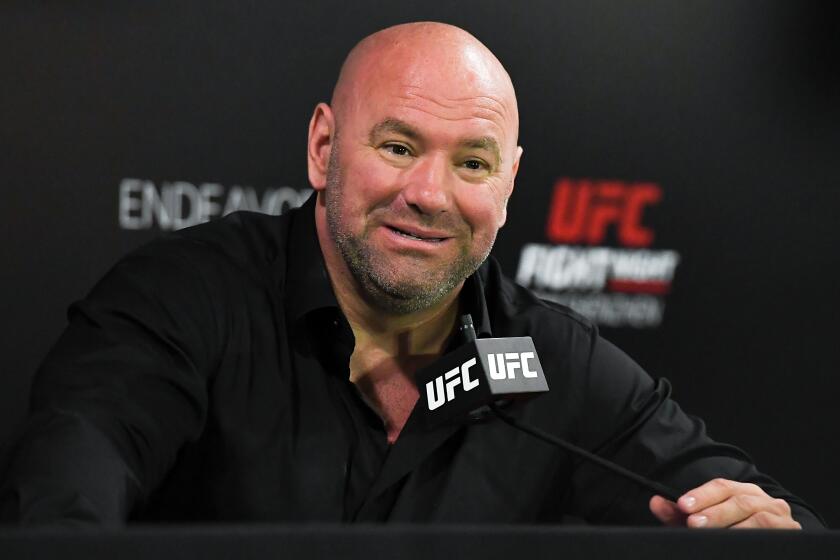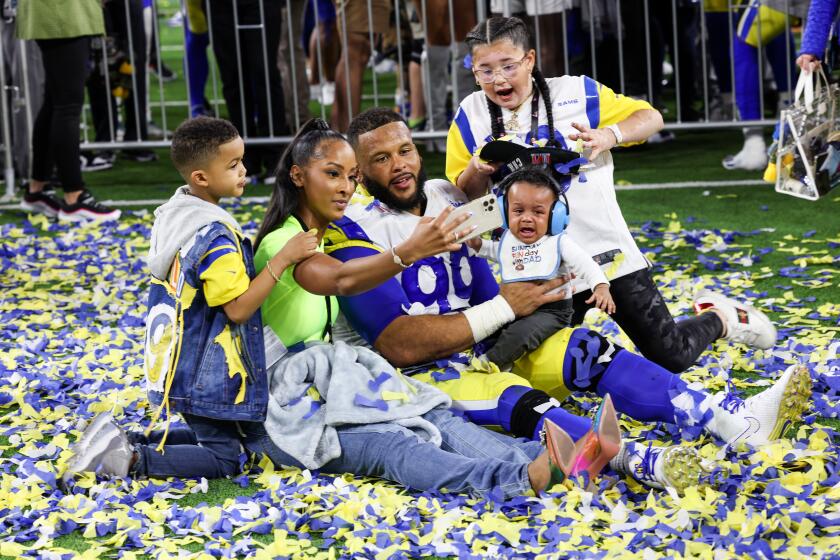Israel Adesanya’s journey to UFC 230 was unconventional, just like his fighting style
Reporting from NEW YORK — Among UFC fighters, Israel Adesanya has a background and career trajectory like few others. His pursuit now is to use his rare talents to reach a level few have attained.
At Saturday night’s UFC 230, the 29-year-old Adesanya (14-0) has his fourth fight this year after his UFC debut in February. A breakout July victory propelled him to a pay-per-view meeting against No. 6-ranked middleweight Derek Brunson (18-6) at Madison Square Garden.
Brunson was a three-time Division II All-American wrestler but Adesanya isn’t concerned about it.
“That doesn’t bother me. I was a white belt not long ago in jiu-jitsu. This is fighting. I’m a great fighter. I know what to do and now I need to show the world,” Adesanya said. “This is my fight. It’s about me. I’m going to be dialed in quick and he’s going to find out. I’ll be able to read him and finish that book before he gets to the first page of mine.”
What separates Adesanya from the pack is a special pedigree supplemented by the patient pace he embraced under coach Eugene Bareman to reach the UFC. A gifted athlete, Adesanya is 6 feet 4 with an 80-inch reach that beats Brunson by three inches in both measurements.
He also fights unconventionally, not afraid to drop his hands like Hall of Fame boxer Roy Jones Jr. to maximize hand speed and unobscured vision.
He smiles at the motivation of his parents’ relocation from his native Nigeria to New Zealand nearly 20 years ago.
“My parents moved me for a better education,” Adesanya said. “And I ended up getting a degree in ... whipping.”
Instead of rushing Adesanya to the UFC, Bareman nurtured the physical skill while Adesanya learned kickboxing in his new homeland through Muay Thai fighting.
“[Bareman] let me know it was best to get experience outside the UFC, to fight different types of guys, different styles, guys from different nations,” Adesanya said.
“Dana White’s [feeder reality television series] ‘Lookin’ for a Fight’ was a good platform, but it’d put guys in the UFC and leave them to sink or swim, a good example being Sage Northcutt, who has talent and the potential to be a superstar, but he’s just above an amateur level, not facing savages. I took my time. I was prepping. I understood. And I’m ready now, so this is going to be another day at the office.”
Adesanya, nicknamed “The Last Stylebender” for his ability to “adapt to any style and bend it to my will,” furthered his ascent by dominating Brad Tavares in the Las Vegas show in July that put middleweight champion Robert Whittaker of Australia on notice that a colossal match stoking the existing New Zealand-Australia rugby and cricket grudges is a 2019 possibility.
Getting there requires the work of impressing a fight crowd at the combat sports’ mecca Saturday, but Adesanya has embedded into his mind the Bruce Lee quote, “If you always put limits on everything you do, physical or anything else, it will spread into your work and into your life. There are no limits. There are only plateaus, and you must not stay there, you must go beyond them.”
A showdown with Whittaker, who is scheduled to defend his belt against Kelvin Gastelum early next year, “is going to happen in 2019 in Auckland [New Zealand] and I can’t wait,” Adesanya maintains, even if it’s rare for challengers to have home-arena advantage.
“It’s not only about the belt, it’s about the guy bringing the eyes to the sport and I’m the guy who can transcend,” he said. “When I bring it to Auckland, you’ll see.”
The substance of his theory is based on how he fights, a dominant, creative stand-up threat comfortable when the action moves to the canvas. Those who have watched the sport for more than a decade see the resemblance of UFC greats Anderson Silva and Jon Jones.
“I understand what they’re trying to say, but I’m pretty sure Jon Jones didn’t appreciate the Anderson comparisons and I’m making my own trail, too,” Adesanya said. “Jones outgrew those comparisons quickly, and I’m going to do the same with the body of work I’m going to put through.”
His cause is aided by his dancing experience, rooted in the “popping” and “krump,” forms that originated in California.
“I went into break dancing after popping, but the true dancing that really connected to my soul was krump. It comes from a very hard place, from inside you, and it developed from South Central L.A.,” Adesanya said. “I will eventually go there and immerse myself in the culture.
“Without dancing, without expression, I wouldn’t be the fighter I am today … that’s why I’m creative, why my jabs are so fast, why my timing is very offbeat, why I get risky. How are they going to read me? They can’t. That’s why I’m so unorthodox.”
More to Read
Go beyond the scoreboard
Get the latest on L.A.'s teams in the daily Sports Report newsletter.
You may occasionally receive promotional content from the Los Angeles Times.
